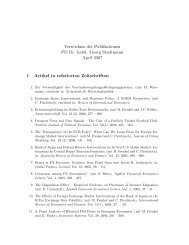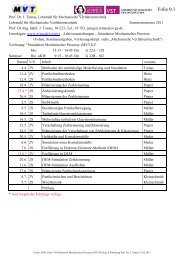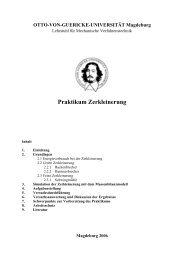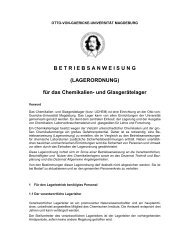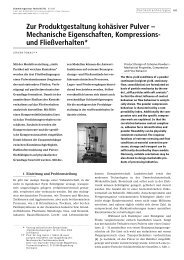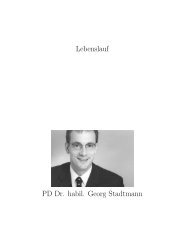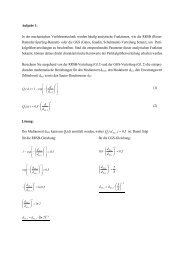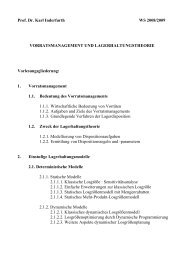Free Vibrations and Buckling of a Thin Cylindrical Shell of Variable ...
Free Vibrations and Buckling of a Thin Cylindrical Shell of Variable ...
Free Vibrations and Buckling of a Thin Cylindrical Shell of Variable ...
Create successful ePaper yourself
Turn your PDF publications into a flip-book with our unique Google optimized e-Paper software.
3 Asymptotic AnalysisAccording to a procedure proposed by Tovstik (2001), the asymptotic solution <strong>of</strong> the boundary value problem forequations (2), can be expressed as( ∫ i ϕ)∑ ∞w(s, ϕ, ε) = exp q(ϕ) dϕ ε k w k (s, ϕ) λ =ε ϕ 0 k=0∞∑ε k λ k (3)k=0whereIm q(ϕ 0 ) = 0{ } dqImdϕ (ϕ 0) > 0 (4)Function Φ has similar asymptotic expansion. It follows from conditions (4) that the functions w <strong>and</strong> Φ arelocalized near the line ϕ = ϕ 0 . By substituting expressions (3) into (2) <strong>and</strong> boundary conditions we get theequations for q(ϕ), w k (s, ϕ), Φ k (s, ϕ) <strong>and</strong> λ k . In the zeroth-order approximation we obtaind 2 Φ 0ds 2 − q4 g 3 w 0 + λ 0 Nw 0 = 0d 2 w 0ds 2+ q4g Φ 0 = 0 (5)where N = q 2 for the buckling problem, N = g for the vibration one. The elimination <strong>of</strong> the function Φ 0 fromsystem (5) gives the following equationd 4 w 0ds 4 − α4 w 0 = 0 α 4 q 4 N= λ 0 − g 2 q 8 (6)gWe suppose that the shell edges are clamped. Then the boundary conditions for equation (6) arew 0 = dw 0ds= 0 s = 0 s = l(ϕ) (7)The asymptotic solution in case <strong>of</strong> freely supported shell edges is analyzed in Eliseeva <strong>and</strong> Filippov (2003). Thechoice <strong>of</strong> boundary conditions for equation (6) is discussed in Tovstik (2001).The solutions <strong>of</strong> boundary value problem (6), (7) have the formw 0n = U(α n s)T (α n l) − T (α n s)U(α n l) n = 1, 2, . . .where<strong>and</strong> α n is a root <strong>of</strong> the equationT (z) = sinh z − sin zU(z) = cosh z − cos zcosh(αl) cos(αl) = 1 (8)The values <strong>of</strong> α n depend on the boundary conditions. If the shell edges are freely supported then α n = πn/l.Taking into account second formula (6) we get that λ 0 is the function <strong>of</strong> the parameters q <strong>and</strong> ϕ:λ 0 = f(q, ϕ) = α4 gq 4 N + q4 g 3N . (9)As the zeroth-order approximation for the eigenvalue λ we selectThenλ 0 = minq,ϕ f(q, ϕ) = f(q 0, ϕ 0 ) (10)λ q = ∂f∂q = 0λ ϕ = ∂f∂ϕ = 0 for q = q 0 ϕ = ϕ 0 (11)3




